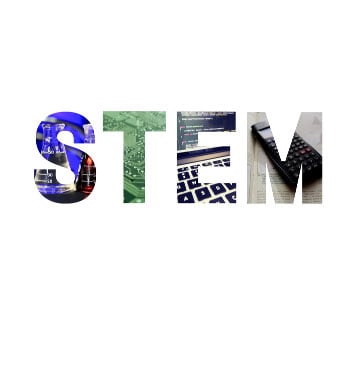
STEM (Science, Technology, Engineering, Math) has been talked about in the education world for years, and even recently it has changed to STEAM to add in the arts. But how can this trend pick up steam and truly engage young learners?
According to a study, “STEM Starts Early: Grounding Science, Technology, Engineering, and Math Education in Early Childhood,” teachers and parents want to encourage and teach their children in the STEM field, but don’t have confidence in their STEM knowledge to do so.
Multiple articles have shown that STEM education is important for all children. But before students engage in STEM-based learning in the classroom, they can start their learning at home.
So where does parent engagement come into play?
The Joan Ganz Cooney Center at Sesame Workshop study reveals many parents feel anxious or lack confidence in their own STEM knowledge; something that may be passed onto their children. STEM started becoming a widely-known term in the early 2000s, which was after today’s parents were in school.
But, parents can help connect STEM learning in school to the home. The report emphasizes by continuing STEM education in the home, it will lead to STEM fluency for students.
This can help students in the long run, especially as the need for coding professionals continues to grow in the workforce. In fact, 10 of the 14 fastest-growing industries require STEM training, according to 100Kin10, a network supporting the national effort to get more STEM teachers into schools. And, the U.S. Department of Education reports STEM/STEAM jobs will grow by 14 percent from 2010 to 2020 in the U.S.
Parent encouragement at a young age can truly have an impact in the classroom, and beyond.
The report provides multiple recommendations to help parents encourage STEM learning at home, in order to expand to the classroom and help their students’ critical thinking.
Bottom line? Help engage the parents of students to create a connection to STEM from home to the classroom.
The report also goes beyond the home and recommends that the U.S.:
In order to complete the web of ‘charging stations’ (as referenced by the report), we need to discuss STEM in the classroom. The report emphasizes the need for schools to support teachers. This includes providing training and institutional support in order to increase teachers’ understanding and confidence around STEM-based learning.
Since this report focuses on STEM for early education, here are four tips for STEM in a Pre-K classroom from a Texas district:
If you’re interested in learning more about kindergarten readiness, check out this Kajeet success story. Lamar Consolidated Independent School District used Kajeet SmartSpot® devices to help prevent the ‘summer slide’ and ensure these young students were ready for kindergarten.
Where is STEM going to go from here? Well for starters, it’s already taking on STEAM by adding in arts to tie in students’ creativity.
The U.S. Department of Education released a “STEM 2026” report to share their outline for the next steps in STEM. Their vision includes: engaged and networked communities of practice; accessible learning activities that invite intentional play and risk; educational experiences that include interdisciplinary approaches to solving “grant challenges”; flexible and inclusive learning spaces; innovative and accessible measures of learning; and, societal and cultural images and environments that promote diversity and opportunity in STEM.
Whichever direction it goes, STEM is definitely here to stay. What tips do you have for using STEM in the classroom?


